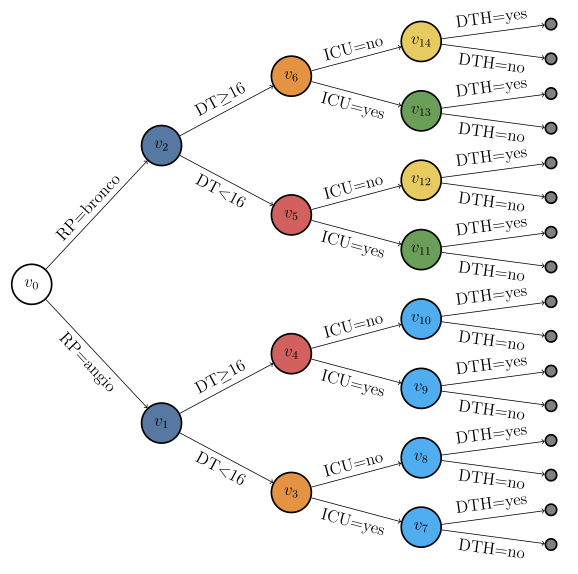
Staged Tree Models: With Applications in R
The book with tentative title “Staged Tree Models: With Applications in R” and authored by Manuele Leonelli and Gherardo Varando is currently under preparation and will be published by CRC Press towards the end of 2024. The aim of the book is to provide an overview of categorical data analysis using staged trees and the stagedtrees R package.
This webpage will be populated with news about the book and, in due course, with additional datasets, exercises and code to complement the book and provide readers with further practice.
The tentative table of contents is as follows:
- Graphical Models and Conditional Independence
- Introductory Example
- Probability Review
- Graphs and Their Properties
- Bayesian Networks
- Conditional Independence
- Bayesian Networks in R: The bnlearn Package
- Conclusions
- Staged Tree Models
- The Barking Puppy
- Beyond Bayesian Networks
- Non-Symmetric Conditional Independence
- Staged Trees
- Asymmetry-Labeled DAGs
- Chain Event Graphs
- Conclusions
- Specifying and Exploring Staged Trees
- Introductory Example
- The
stagedtreesparametrization - Estimating Staged Tree Parameters
- Dealing with Missing Observations
- Probabilistic Inference
- Exploring and Comparing Staged Trees
- Conclusions
- Learning Staged Trees from Data
- Introductory Example
- Score-Based Learning Algorithms
- Clustering Learning Algorithms
- Choosing a Variables’ Ordering
- Bayesian Learning
- Conclusions
- Special Classes of Staged Trees
- Introductory Example
- k-Parents Staged Trees
- Simple Staged Trees
- Context-Specific Staged Trees
- Staged Tree Classifiers
- Naive Staged Trees
- Conclusions
- Causal Inference and Discovery with Staged Trees
- Introductory Example
- Causal Models Based on Staged Trees
- Discovering Context-Specific Causal Relationships from Data
- Statistical and Causal Equivalence of Staged Tree Models
- Heterogeneous Treatment Effect Estimation
- Conclusions
- Conclusions